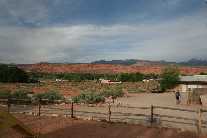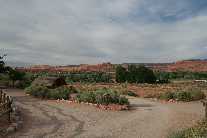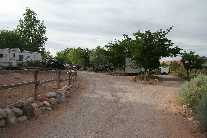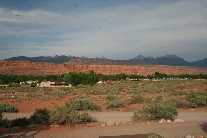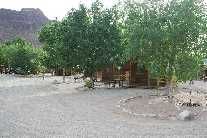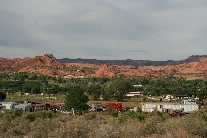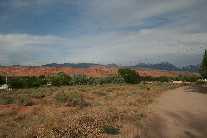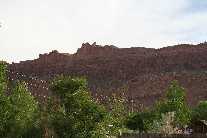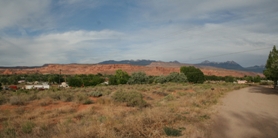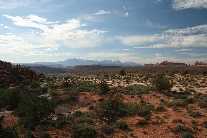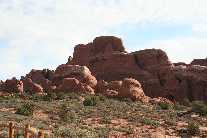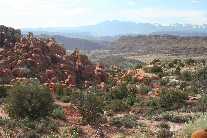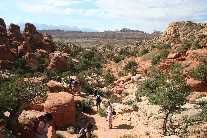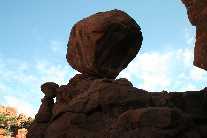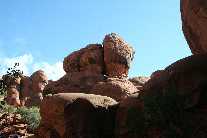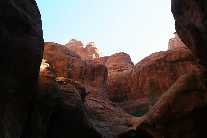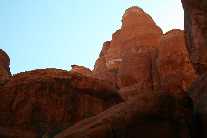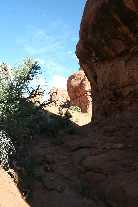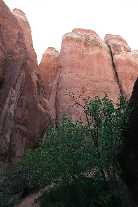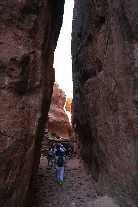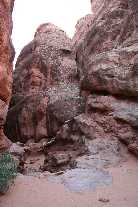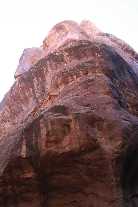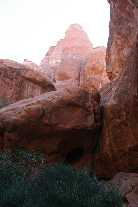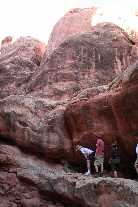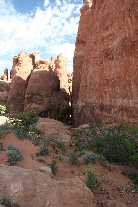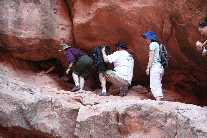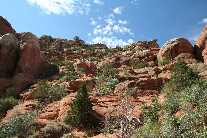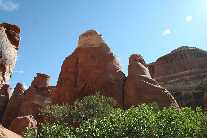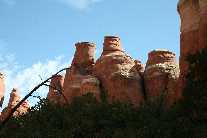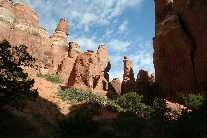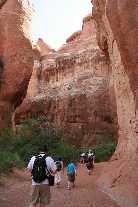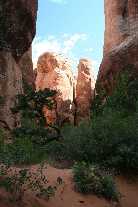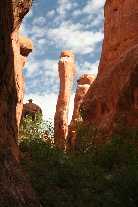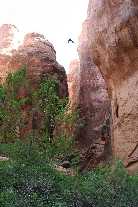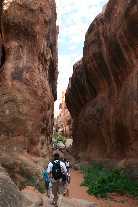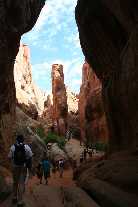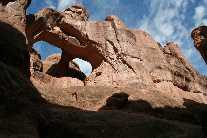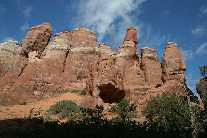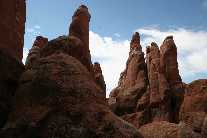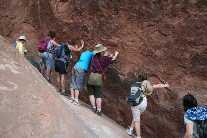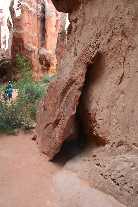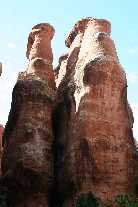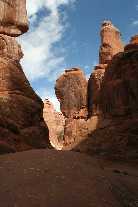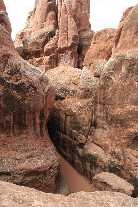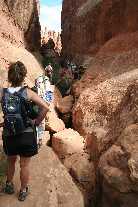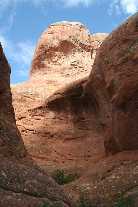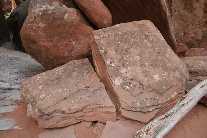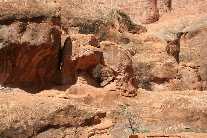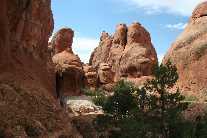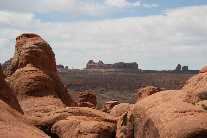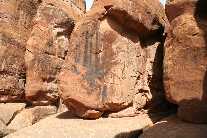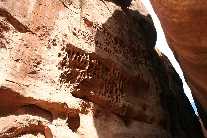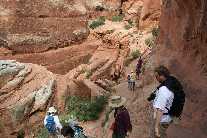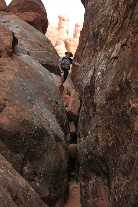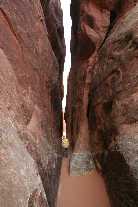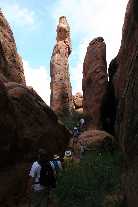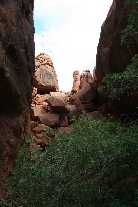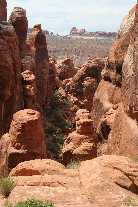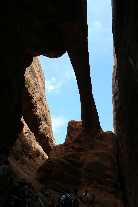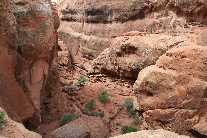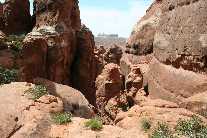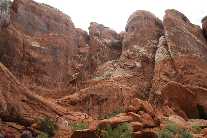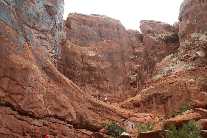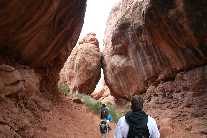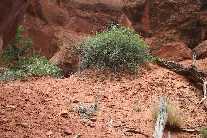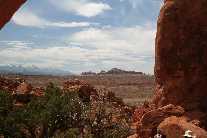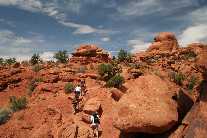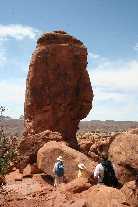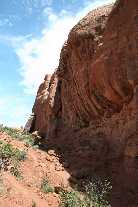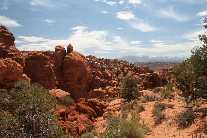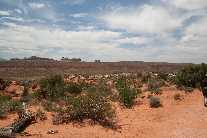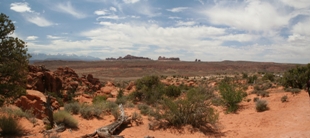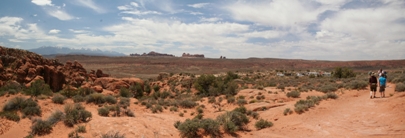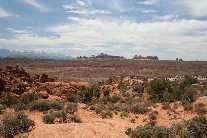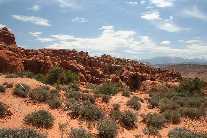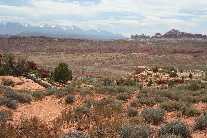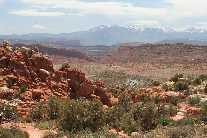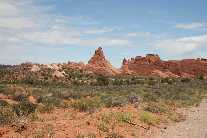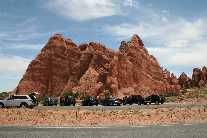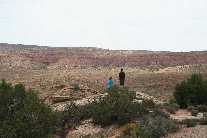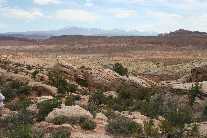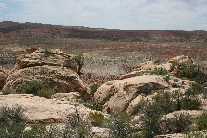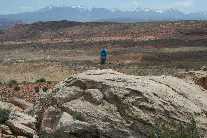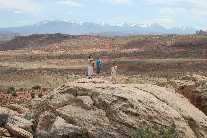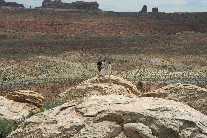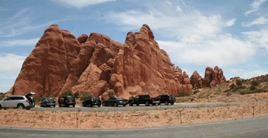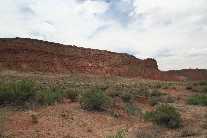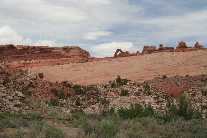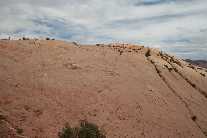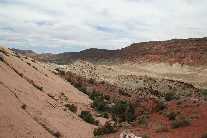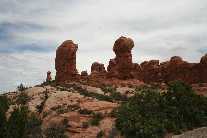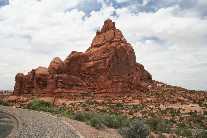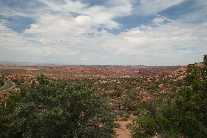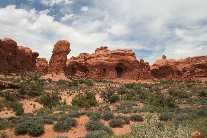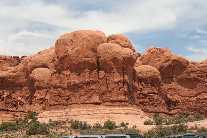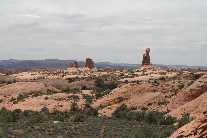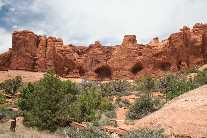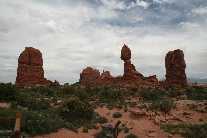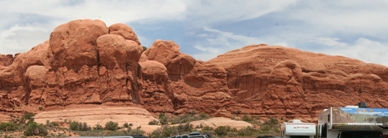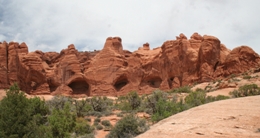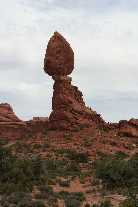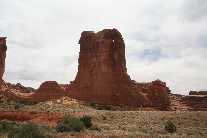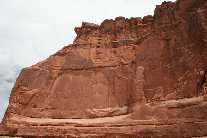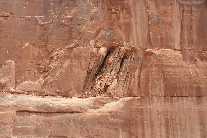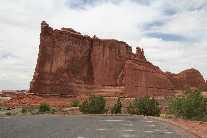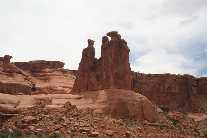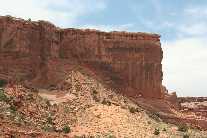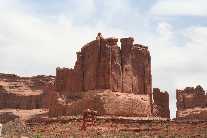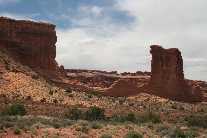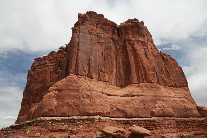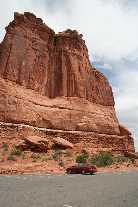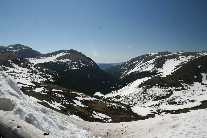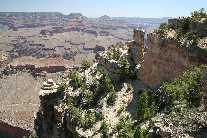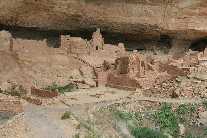|
Arches National Park 2011
Our second stop on our trip out west was Arches National Park in Moab, Utah.
I wasn't quite sure what to expect when we arrived in Moab, but I can honestly
say that I was quite taken back. I have gotten so used to seeing trees,
fields of corn and grass, and black soil that the dry arid land with little to
no trees was a bit of a shock.
(Click on Images for Larger Picture)
|
We stayed at another KOA in Moab and one of the nice things about it were the
trees. Normally, those types of trees would not do well in this
environment, but they did have an irrigation system set up to water the various
trees and plants. I will say that I did enjoy the says we had in the KOAs
and though they were a little different than what I remember of them as a child,
I found them very comfortable and accommodating.
On Monday morning, we were scheduled to take a three hour ranger guided hike through
the Fiery Furnace in Arches National Park. If you go to Arches, I
highly recommend this hike, especially since you can only explore this area with
a National Parks Ranger, or you have to purchase a back country pass: I'm not
sure what purchasing the pass all involves.
|
(Click on Images for Larger Picture)
|
In the first two pictures above, the Ranger allowed, anyone who wanted, to crawl
through a small arch that lead to a very small passage back to the entrance to
the area we were exploring. It was only a short crawl, but I decided
to pass on this particular adventure. As you can see, there were many that
tried it.
|
(Click on Images for Larger Picture)
|
One of the reasons this is a Ranger guided tour is because it was very easy to
get yourself lost in the area. Our Ranger described what we were doing was
like cave exploring except there was no roof. Also, we were informed about
"busting the crust". What that meant was, even though everything looks
like it is just sand or dirt, it really wasn't. The ground is covered in a
layer of very fine sand. The sand particles do not stick together and
washes away really easily with any kind of moister, or even when the wind blows
even a little bit. The reason it looks like there are areas where the sand
is "sticking", in actuality, it is a network of lichen and fibrous plant life.
This plant life takes a really long time to grow, but as it grows, it builds a
network beneath the sand and forms a base to which the sand "sticks". The
problem is, if something were to break this network, like someone stepping on
it, you break the network and it could take up to fifty years for the ground to
recover. That why it was stressed to us to stay on the path, which were
really washes, what we refer to as dry runs, or to stay on the rock.
|
(Click on Images for Larger Picture)
|
The hike was described as a mildly strenuous hike, and you can get an idea, from a
few of the pictures, what this means. There was one place where you had to
jump up through a narrow passage. In the picture with everyone leaning on
the wall, you had to start out that way, then lean back and sit while you
scooted for few feet, then you had to turn and step down through a very, very
narrow passage. In the second to last picture in the series above, there
was even a spot where you had to jump across the little cut.
|
(Click on Images for Larger Picture)
|
It was always interesting to see the different forms of life that call this
climate home. There were yucca trees, bushes of different varieties, and
even tiny little Oak plants. We learned a bit about the life of the
ravens that inhabited the park. Apparently they are intelligent enough to
know when the tours were coming through, and can apparently coordinate with one
another at picnic areas in order to steal food from unsuspecting tourists.
A couple of things I would like to point out in the series above is the first
photo of the broken rock. Apparently, the rock had broken a couple of
months prior to this photo. The second picture shows the arch that is
called the "Kissing Turtles". And the last photo shows "Surprise" arch.
This was a surprise because the people who found it did not see it from above
when they flew over, but found it when exploring the area from beneath.
|
(Click on Images for Larger Picture)
|
The second picture in the second row of the bush gives you a good look at what
the "Crust" looks like up close.
|
(Click on Images for Larger Picture)
|
While the hike we took through the Fiery Furnace makes the area look like its
filled with many little canyons, most of the park consists of wide open areas
and vast expanses of wilderness. You can even see the snow covered
mountains in the distance. A side note, these are called the "Salt"
mountains because the first explorers saw them and thought that it was salt,
rather than snow, because snow couldn't possible exist in such a warm and dry
region.
|
(Click on Images for Larger Picture)
|
As the name indicates, there are thousands of natural arches in this park.
So many, that it would take an extremely long time to try and see all of them.
We did manage to see a few of the more famous ones like the Delicate Arch
pictured from a distance in the second photo. The third and fourth are of
what appears to be a field, but in actuality is a very large layer of rock.
|
(Click on Images for Larger Picture)
|
Another famous landmark is Balancing Rock, pictured above. This is a very
impressive feature even from a distance. There is a path that will take
you directly beneath the formation, and another that will take you up nearly to
the base.
|
(Click on Images for Larger Picture)
|
I am still in awe at the scale of all the formations in the park. Just
when you feel that you get grasp of how large, or how far away something might
be, you are quickly brought into reality of the size of things. I highly
recommend visiting this park and surrounding areas. We discovered that we
could easily spend several days in the area, and I really hope that sometime we
get that chance.
|
Trip West Photo Albums
|
